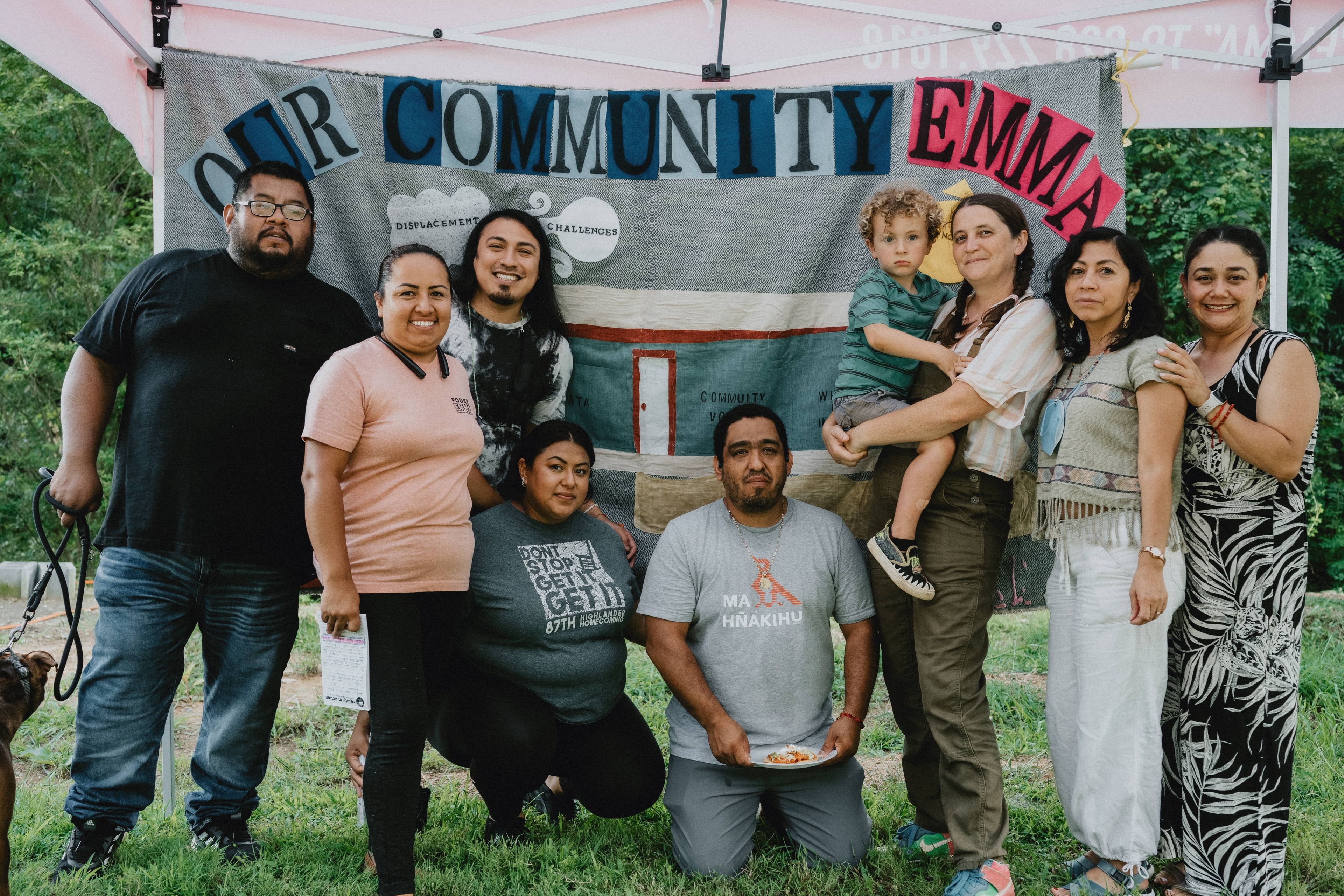NON-EXTRACTIVE FINANCE
What it is and why it matters
Workers at California Harvesters in the fields [Photo: California Harvesters]
Our loans and investments are always non-extractive, designed to make sure that the returns to Seed Commons as a lender or investor never exceed the wealth generated for the borrower and their community.
Traditional finance is designed to be extractive—always maximizing profits, no matter the human or environmental costs. People, businesses, and even whole countries are forced into the harmful trap of extractive debt, rather than having the power to use credit or investment as a tool they can control to advance their own wellbeing.
Non-extractive finance flips this power relationship, making sure that, as we put it, “a borrower will never be worse off after working with us than before working with us.” In every loan and investment, we make sure that it is structurally impossible for us to benefit more than the workers and communities behind the project we are financing. We don’t want to maximize our returns, we want to maximize the amount of productive capital under worker and community control.
The technical details
From the perspective of the project we are financing, the returns to Seed Commons as a lender or investor show up as the cost of capital. The baseline condition for non-extractive finance is that this cost should never exceed the amount of profit or surplus generated by the project using that capital. To put it schematically:
Cost of capital is less than or equal to total profit generated by the project using that capital
In practice, we generally set terms that go beyond this baseline, because we want to make sure that our investments generate wealth that can be retained by workers and communities. The cost of capital should never absorb every dollar of profit generated, or even most of the profit generated. Typically, we’ll stipulate that no more than half of the profit generated by our investment will be return to us as the lender:
Cost of capital is less than or equal to 50% of total profit generated by the project using that capital
To make it clear where that other half goes, this is equivalent to:
Cost of capital is less than or equal to total profit generated and retained by the project using that capital
The exact way we put this into practice varies across investments, especially depending on how they are structured, i.e. whether they are secured asset purchase loans, working capital loans, line of credit loans, preferred share equity investments, and so on.
To take the simplest example: if we make a loan to a project, for instance, we’ll typically create a repayment schedule in which no payments of interest or principal are due until after the project is able to cover expenses, including living wages or salaries. A baseline amount of interest—calculated to cover Seed Commons’ own costs of capital and staff expenses, and to replenish our reserves for nonperforming investments—will be paid once the project becomes profitable enough to do so. And then, and only if the project is extremely successful, an additional percentage of generated profit will be returned to Seed Commons, paying that success forward to the next project we are able to support.
You can see some sample legal language we use in a project agreement like this here.
Isn't all finance extractive?
Once in a while, we get asked if interest is inherently extractive—or even if repayment of any kind is extractive. We get where this concern is coming from, because we’ve been brought up in a world where finance is designed to be extractive, and where resources are unevenly and unjustly allocated along race and class lines.
But we believe that non-extractive finance, as we’ve developed it in practice, can be a part of a reparative solution—and one that is uniquely sustainable.
The key is that we make our investments so that workers and communities can generate wealth they control. If they don’t do so, nothing is returned to us as an investor. But if they do create wealth, some of that can be shared to help make sure the next project can have the same support and the same chance to succeed. Non-extractive finance is ultimately about capital that is subordinated to the needs of people, controlled democratically by the community it serves—a financial commons. And a commons thrives because the community that depends on it pays it forward to preserve it. It’s a regenerative cycle of mutual flourishing, and that’s what is at the core of all the dry details of our investment-making. Seed Commons is more than a charitable vehicle to move resources to communities in need—it’s the financial infrastructure to keep resources flowing where they need to go, designed to be self-sustaining over the long haul.




